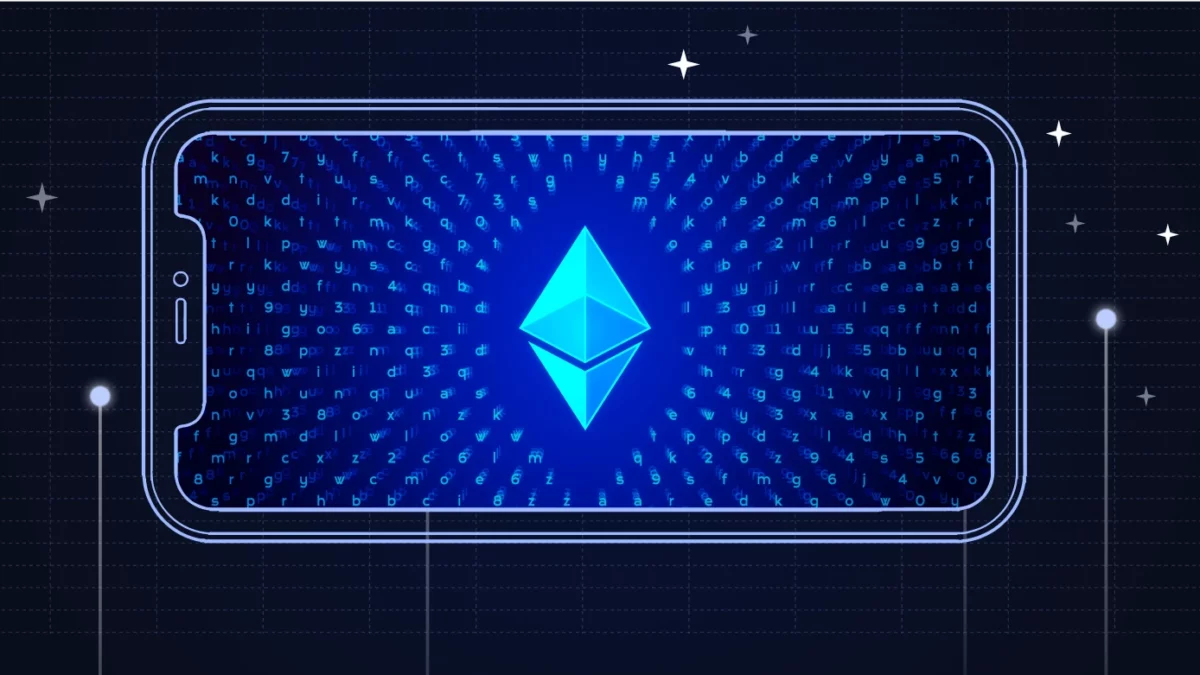Table of Contents
ToggleIntroduction
If there is something that can be described as the energy core for Ethereum, the Ethereum virtual machine or commonly referred to as EVM is exactly what it is. Similar to how a good energy booster gives a rush to the normal chores, an EVM pumps the developers with the ability to create smart contracts and DApps in the Solidity programming language of the Ethereum Network. The major reason that is responsible for the development of DApps that are being created today is EVM. This is exactly what distinguishes it from Bitcoin and other distributed ledgers. In today’s article, we will be diving headfirst into Ethereum virtual machines and breaking down what they actually are along with how they work, their role in DApp development and the advancement of Web3.
What is an EVM?
To simply explain a Ethereum virtual machine; it is a software platform; which is more like a virtual computer that is used by developers in order to create decentralized applications or DApps. Developers can also use the EVMs to execute and deploy smart contracts on the Ethereum network. If one is a programmer with an interest in DApps or if an investor is looking to learn more about the ever-evolving world of EVM crypto, the most probable or the most important term that they would probably have heard of would be Ethereum virtual machines. To best understand what an EVM is, it helps to first learn a little about its history.
According to the creator of the second largest crypto according to market cap, Ethereum, Vitalik Buterin, the main purpose of Ethereum virtual machine is to dictate the state of every block in the Ethereum blockchain. To understand it better; EVMs works similar to how other blockchain-based networks. It is so because they also use a distributed ledger in order to maintain databases for transactions. Along with that, EVMs also add another layer of functioning because of their smart contract capabilities.
Did You Know? Many refer to this second layer as a “distributed state machine.”
Ethereum Virtual Machines are made to be able to process any kind of crypto contract that is abled to be built on Ethereum’s blockchain. Some of the other important features of EVM that should be noted are:
- EVMs are the runtime environment which helps in executing Ethereum smart contracts.
- As is know, the Ethereum network contains its own scripting language, better known as Solidity. Along with the Turing complete scripting language comes a need to execute this code.
- The Ethereum Virtual Machine program runs on top of the Ethereum network. This means that all the nodes reach a consensus about which code is to be executed at every given time.
Thus, the EVM has a machine state that is volatile by nature during the processing of any transaction and a global or world state that contains information regarding the different accounts maintained on the Ethereum blockchain. All actions are governed by the EVM code, which in itself has gone through several iterations since the launch of the Ethereum network in 2015, leading to the existence of different implementations of the EVM currently in use.
Read more: Ethereum Shanghai Upgrade
How does Ethereum Virtual Machine work?
In short, Ethereum Virtual Machine is a program which executes scripts used to implement certain operations usually in Ethereum blockchain. The EVM requires that one has access over any network node so as to be able to execute the desired commands and create new tokens on the blockchain without any difficulties. It serves as a platform for applications to be executed on.
- Ethereum which has something special called a smart contract. These contracts comprises of computer code that facilitates the exchange of money and information.
- The contracts are predefined by the individuals who has created the smart contract. This is so that they can ensure that a certain outcome will take place based on either what happens or does not happen.
- Ethereum Virtual Machine comes in between with the Turing complete environment for execution of scripts and smart contracts.
This means that anything that can be implemented with a computer can be run on EVM.

EVM compatible blockchain
One of the problems between blockchains that has proven to be a significant is the interoperability issue. With the persistent issue of the Ethereum blockchain, i.e. high gas fees and slow transactions, many developers took to building various DApps and smart contracts based on other permission-less blockchains in order to offer faster transactions and lower gas fees. However, many of these blockchains are severely limited and lack interoperability with other blockchains.
Here comes the probable solution where EVM-compatible blockchains has taken the stand to prove that they can be an easy way of solving this persistent issue. By this, other than starting from scratch and building an environment that is similar to that of EVMs through the use of cross-chain bridges, the developers can take certain pieces from the Ethereum network, and create DApps that will be bale to allow users to quickly and easily transfer assets between any EVM networks.
Using this interoperability, many of the most used blockchains in recent times caters to this EVM-compatible model. Below mentioned are some of the examples which also include some of the biggest names in the EVM crypto space. They are;
- Binance Smart Chain
- Avalanche
- Fantom
- Cardano
- Polygon
- Tron
All of the above mentioned sidechains are EVM compatible. The whole bunch offer all of the benefits and reach of the Ethereum blockchain, coupled with greater speeds, higher capacity and decreased transaction costs.
Read more: Ethereum in 2023
EVM Use Case
Taking in the blockchains that are EVM compatible, let us now take a look into the various use cases of EVM!
ERC-20 Tokens
Though ERC-20 tokens have uses that are so much more than to be contained only as EVM crypto, these tokens are also used to incentivise several DApps and Ethereum projects, all of which are specifically designed to be easily transferred between addresses and maintain the same value across the network. For example; Nexus Mutual; who work towards providing insurance on smart contracts. The company utilizes the NXM ERC-20 token as incentives to users; as using them gives the used the ability to make claims and purchase coverage.
AMMs and DEXs
This usage of EVM is pretty simple. As decentralized exchanges, or DEXs allows the exchange of ERC-20 tokens through the deployment of smart contracts, EVMs come in handy. As a result, these smart contracts helps users in tapping into the liquidity pools of tokens without a third-party interference, thus the title of automated market makers (AMMs). For example; SushiSwap, Uniswap.
NFT Minting
Another widely popular use case of EVMs are non-fungible ERC-721. Smart contracts and this token are commonly used for the minting of non-fungible tokens (NFTs). These are the tokens that possess unique value across the Ethereum blockchain.
DAOs
The Ethereum virtual machines are governed by a decentralized autonomous organization, which is commonly referred to as DAO.
Did You Know? A DAO is a communal entity that lacks a central authority. This gives the community control over the network.
Apart from being fully autonomous, DAOs are also transparent. Smart contracts are used to outline the rules and carry forward the decisions based on code-written instructions. Being dependent on smart contracts, DAOs also becomes a very big use case for EVMs.
Read on: ETH Price Prediction
EVM Pros
- Execution of code without risking data: Users can execute untrusted code without putting the data at risk as EVM guarantees computations to take place without any interference of huddles or with the personal files.
- Running complex smart contracts: The best part is the ability to run complex smart contracts in EVM without having to worry about how they will interact with each other.
- Deterministic processing: As smart contracts that have been written on EVM have access to all of Ethereum’s states since its inception, the processing happens in a deterministic way. This gives more guarantees about their correctness.
- Distributed consensus: The ability to run the same program but from the own computers of the users is one of the potential applications of Ethereum. This happens as the network allows distributed consensus.
- Easy to write stateful contracts: If one is looking from a developer perspective, a EVM is designed for writing smart contracts as well as for creating dApps or decentralized applications; which in a nutshell are programs that are running on distributed networks in such a way that it ensures all of them are seeing the same version.
EVM also makes it incredibly easy to write stateful contracts, which need access to some kind of persistent storage.
EVM Cons
- Storing data is costly: Starting off with the gas price, which is what that is needed to use in order to pay the fee to run a smart contract. Other than that, there is the high cost of storing data on the blockchain, which could end up taking up more than 3TB!
- High gas price: All transactions within Ethereum require a fee to be executed. These fees are referred to as “gas”, and are paid in ETH tokens. Gas price depends on the complexity of executing a transaction as they are charged during the execution. As difficult the computation for a transaction will be, the higher will be the gas cost.
- Technical expertise is a requirement: The usage of smart contracts and EVM comes with the requirement of technical expertise. As it is a Turing-complete system, it allows programmers to write scripts in any programming language they want to. The facility can be deemed as excellent or disastrous, depending on the intention behind the code being written.
Read in detail on: Ethereum Gas Fees
Conclusion
With that being said, EVMs are not perfect. Challenges regarding network throughput and transaction speed continue to be an issue plaguing the system. Currently, these issues are focal points for the Ethereum development community, and solving them is a road map for Ethereum’s continued usage and success.
If Ethereum is to live up to its promise of revolutionizing the way we interact and transact with each other, it will be the result of improvements made to the EVM.
FAQs
The virtual machine is powered by the gas that is generated at execution. Solidity is the primary language the is used in Ethereum as well as on other private blockchains. Yes, EVM is a state machine that enables smart contract deployment and execution in Ethereum's decentralized ecosystem. The EVM uses a stack-based architecture and a word size of 256 bits.What powers the virtual machine?
What language is an Ethereum virtual machine?
Is Ethereum virtual machine a state machine?
What is the architecture of an Ethereum virtual machine?
Related posts
Understanding the Different Types of Cryptos: Coins, Tokens, Altcoins & More Explained
Explore the major types of crypto assets and their unique roles.
Read more
Bitcoin Price Hits New All-Time High Following Fed’s 25-Basis-Point Rate Cut
Fed’s interest rate cut spurs crypto momentum, boosting Bitcoin and Ethereum prices.
Read more


